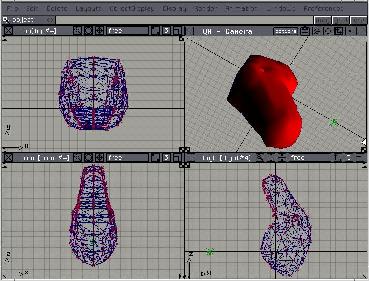VR Software
Software:
Since virtual reality is a three-dimensional medium, all the objects in a virtual world must be specified such that they can be viewed from any angle. A simple picture of an object is not sufficient. The actual geometry of the objects must be specified using 3D modeling software, and then imported into the virtual environment. For a deeper discussion of modeling software, see the section called Building in the Fundamentals of Building Virtual Worlds topic.

Since there is a limit to the geometric complexity of the objects in a virtual world, it is often useful to be able to "paint" the surfaces of the objects with additional detail. This process is called texture mapping and requires two-dimensional graphics software often called "paint programs". Images created with this software (or photographed, digitized, and then edited with this software) can then be stretched over the geometric framework produced in the 3D modeling software to create detailed, interesting objects.
A few examples of 2D graphics software:
- Adobe Photoshop
- Adobe Illustrator
- Fractal Design Painter
Sound is a very important, yet often neglected aspect of virtual reality. Although the state-of-the-art in 3D graphics is very impressive to look at, it is not very realistic, and does not approach the potential of the human perceptual system: a virtual environment is low resolution, looks like computer graphics, and is not likely to be mistaken for the real thing. Sound reproduction technology is much further along (is it live or is it Memorex?). Digital sound is nearly as high resolution as human hearing. Digital editing software allows you to cut, splice, mix, and loop the sounds of your virtual environment.
Virtual Reality requires sophisticated software in order to provide a compelling experience. The software must be able to process the inputs coming from trackers and input devices, and then update the displays at least 20 times each second. This is further complicated by the fact that there may be more than one person in the virtual world, more than one set of inputs and displays, and more than one networked computer running the simulation. The software creates and maintains an internal database of all the objects in the virtual world, continually monitors changes to the database, and distributes this information to all the computers participating in the virtual world.
Examples of VR Simulation Software:
- Sense-8
- Division
- Superscape
- Cosmo
- VRML


Next Topic | Home

